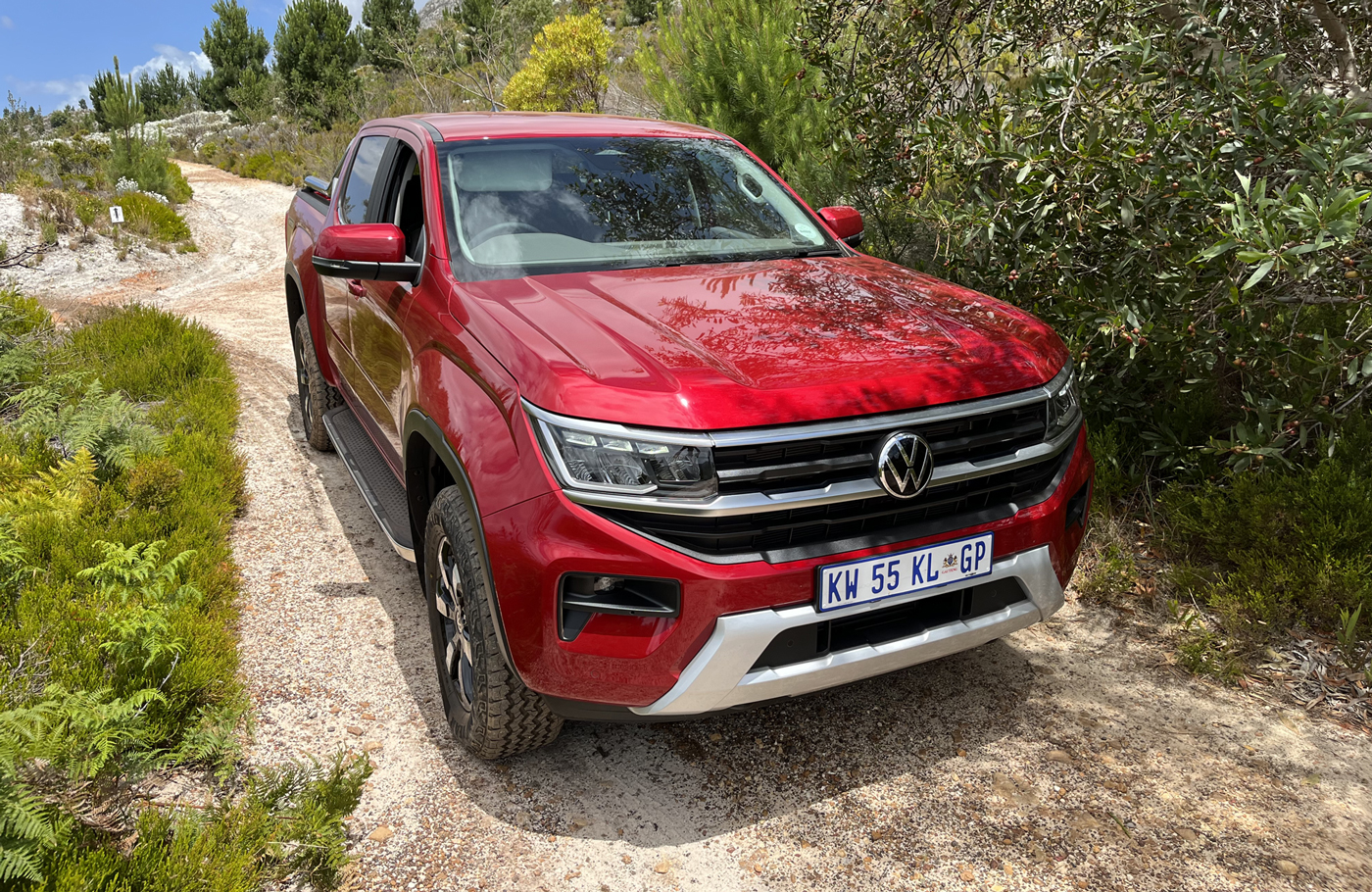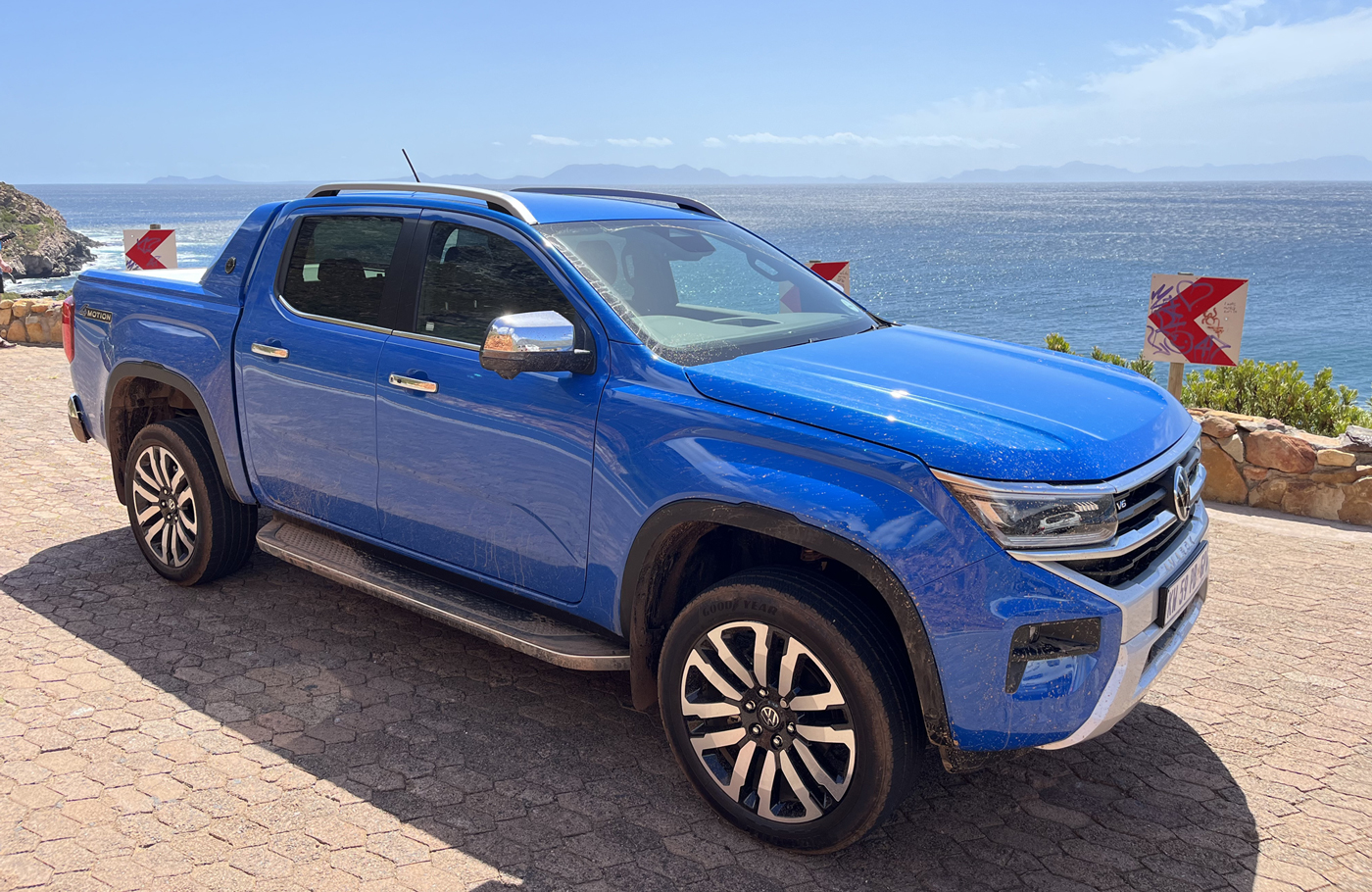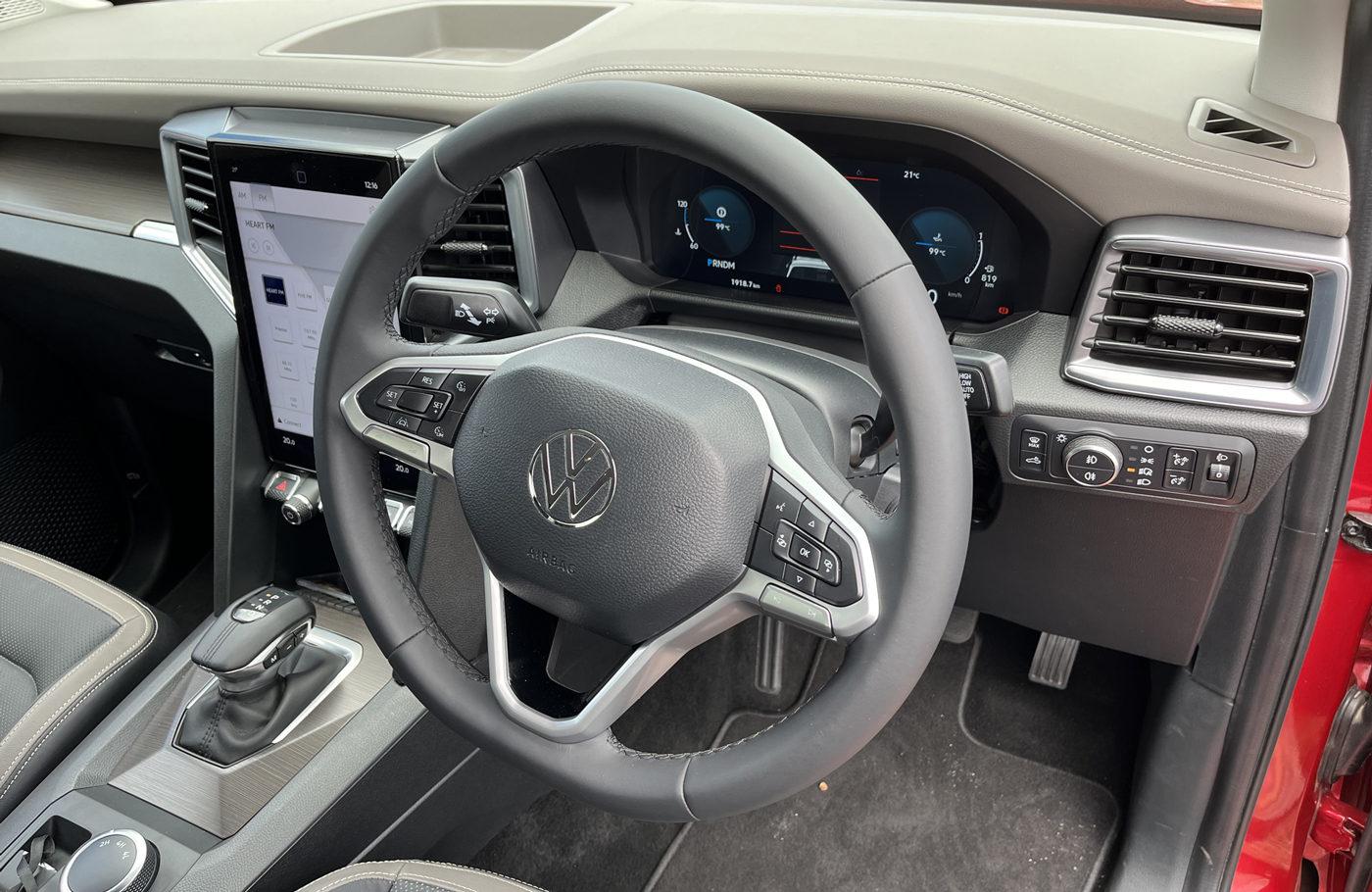Next Edition Volkswagen Amarok: High tech, high spec
Next Edition Volkswagen Amarok: High tech, high spec
The new Amarok has been launched to the world’s media in Cape Town. JARLATH SWEENEY was there.
When the original Amarok arrived on the scene in 2010, this one-tonne pick-up opened up a new customer base for Volkswagen Commercial Vehicles (VWCV) in what was an expanding marketplace. Over 830 000 purchasers, in fact, snapped up the new vehicle all around the globe. Back then, the inaugural model was described as “the most modern and most fuel-efficient open-back off-roader in the market”. It was duly honoured by winning the first-ever International Pick-up Award (IPUA) for 2010, after successfully coming out on top in a series of multi-brand test trials in Ireland. It was praised back then by the awarding jury for its SUV-like handling, rugged appearance, and off-road prowess.
When the revised edition was launched in 2016, it included a range-topping 3.0-litre V6 diesel and a new eight-speed automatic gearbox. Soon after, the IPUA 2018 trophy was heading to the VWCV HQ in Hannover.
Now, five years on, an all-new version has been developed, this time around as a co-design, co-production collaboration project with Ford Motor Company.
According to Peter Sulc, product manager, Amarok, this next step took four years of work, with input from design studios and engineering departments in Germany, Australia, and South Africa (where the Amarok is made alongside the new Ranger at Ford’s factory in Pretoria).
Although using the body shell, chassis, and drivetrain from the new Ford Ranger, VWCV’s chief designer Albert Kissinger and his team have uniquely restyled the pick-up’s front, sides, rear, and exterior to give it the distinctive Volkswagen family look. Kissinger is pleased with the outcome, as the new Amarok “is more expressive, more elegant, and more powerful”.
Being more curved than the previous model, these new design lines deceive the eyes – the new model is 96 mm longer at 5 350 mm, and its wheelbase is extended by 137 mm to 3 270 mm for the double-cab variant, ensuring more load volume and extra rear leg room for passengers.




For European markets, the new Amarok will offer a choice of one petrol TSI and three TDI diesel engines. The diesels include two four-cylinder versions – a 2.0-litre TDI 170 PS four-cylinder, with a six-speed gearbox and 4MOTION 4WD, and a 2.0-litre 205 PS/500 Nm bi-turbo four-cylinder unit, which comes with the addition of a 10-speed automatic transmission. The range-topping diesel will be the 3.0-litre TDI 250 PS/600 Nm V6, with the 10-speed auto gearbox, while the petrol option is a 2.3-litre TSI providing 302 PS/452 Nm (exact specifications for South Africa are detailed on page 40 and 41 of this issue).
A number of trim levels are specified, from the base Amarok, to Life, Style, PanAmericana, and Aventura specs, the latter two variants packed with off-road technology and exclusive premium comfort and safety fittings. The new Amarok is also made easier to drive by a whole armada of driver assist systems. More than 20 of these systems – for example ACC+ Adaptive Cruise Control (which incorporates road signs into the automatic control of speed via camera scans) and the “IQ.LIGHT – LED matrix headlights” – are new on the Amarok and make it more effortless to drive than almost any other pick-up on the world market.
Past Amarok customers and drivers have appreciated its solidness, toughness, and reliability. The new Amarok has managed to keep all these traits, plus the VWCV feel, but with a more sophisticated and smoother driveline.
For the international media drives, VWCV decided on South Africa, with Cape Town as the central location for both the on-road drives and off-road 4×4 experience. On board the 3.0-litre V6 Aventura Amarok Mach II, we found that it excelled under all circumstances. The smoothness of the powertrain and driveline out on the open road all around the Somerset region was most pleasing, while over the technical, hard gravelly off-road terrain at the Eglin Grabouw Country Club, the Amarok proved equally competent, never flinching as it passed over the hills and down the vales. During this part of the journey, the 4 Low gear was mostly engaged, with the differential lock and hill descent modes utilised when required.
There are six driving modes to choose from in total. Depending on the surface, a driver can select between Eco, Normal, Mud/Ruts, Sands, Slippery, and Load/Trailer.
The second day proved to be a dream sightseeing tour in the PanAmericana, taking in venues and locations such as the Cape Point Vineyards and the Dunes Beach Restaurant. Driving the stunning Chapman’s Peak Drive skirting the Atlantic along the way was made all the more memorable by the superbly built and specified new Amarok.
The long spec list includes technologies such as Intelligent Speed Assist, Lane Assist Pro with adaptive lane guidance, 360-degree area view, swerve assist, auto hold, park assist, and Dynamic Road Sign Display. As already mentioned, the latter is incorporated into the ACC+ Adaptive Cruise Control, displaying speed and overtaking road signs on the instrument panel. On our drives, we noted that this circular indicator icon display on the lower section of the touch screen is too small, requiring the driver to stretch from the normal driving position to see it. It seems to be more conveniently positioned for left-hand drive versions.
We drove two models from the top end of the range: the Amarok Aventura and the flagship PanAmericana version. Each comes with its own exterior and interior styling characteristics, both inside and out.
The Amarok PanAmericana gains added elegance in the interior from “Cricket” leather and multi-adjustable heated front seats, while the instrument panel is upholstered in soft-touch faux leather. To further add to the ambiance, the roof liner is black instead of grey, the sound system is from Harman Kardon with eight loudspeakers, and ambient lighting is standard. Last but not least, the renowned VWCV 4MOTION all-wheel drive system in the PanAmericana comes with a rear differential lock and an additional off-road cruise control system.
The Amarok Aventura’s spec level is also particularly exclusive. Like the PanAmericana, the Aventura is equipped with the IQ.LIGHT – LED matrix headlights and LED rear lights. It also shares with the PanAmericana the X-design front bumper – here, however, painted in light grey metallic. The Aventura also differentiates itself from all other versions via chrome-trimmed wing mirror covers and door handles, a sports bar painted in the vehicle body colour, and chrome trim strips in the step treads.
The Aventura features lots of soft-touch faux leather, while decorative stitching provides an additional stylish contrast. For the seats and door inserts, VWCV uses elegant Savona leather.
Undoubtedly, the new chassis with its longer wheelbase has improved an already steady pick-up. Knowing that many owners regretted the early demise of the existing Amarok model due to the changes at the Hannover factory and the formation of the collaboration project, they will be eagerly anticipating this new model. And it’s fair to say that the wait has been worth it, as the additional time was used with great purpose and result.
The Amarok is retailing in South Africa from 18 March. Further details pertaining to local pricing and specifications appear overleaf.
- Jarlath Sweeney is editor of Ireland’s leading commercial vehicle magazine, Fleet Transport. You can download the magazine here.
Published by
Focus on Transport
focusmagsa




